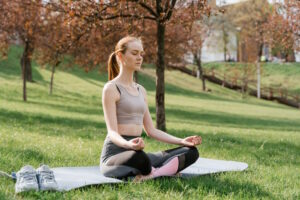
Amid the intricacies of injury recovery, the journey to regain strength and mobility can be both daunting and transformative. Enter Pilates—a practice renowned for its targeted approach to core strength and its potential to aid in rehabilitation after injury. With its emphasis on controlled movement, breath coordination, and mindful engagement, Pilates offers a comprehensive avenue for strengthening the core and promoting overall well-being during the rehabilitation process. In this exploration of Pilates for rehabilitation, we delve into its role in strengthening the core after injury, highlighting its benefits and significance.
Is Pilates Good for Injury Recovery?
Absolutely, Pilates is recognized as a valuable tool in the realm of injury recovery. Its low-impact nature and focus on controlled movements make it a suitable option for individuals recuperating from various injuries. Whether you’re dealing with musculoskeletal injuries, post-surgery recovery, or chronic pain conditions, Pilates can be tailored to accommodate your specific needs and limitations.
Pilates exercises are designed to be adaptable, allowing for gradual progression as your body heals. By emphasizing precise and controlled movements, Pilates promotes improved joint mobility, enhanced muscle strength, and overall functional recovery. It’s essential to consult with a healthcare professional or a certified Pilates instructor to customize your practice based on your injury and recovery stage.
Is Pilates Good for Strengthening Your Core?
Indeed, one of the hallmark benefits of Pilates is its unparalleled emphasis on core strength. The practice targets the deep stabilizing muscles of the core—such as the transverse abdominis, pelvic floor, and multifidus—promoting stability, balance, and functional strength. These muscles play a pivotal role in maintaining proper alignment, preventing further injury, and facilitating efficient movement patterns.
The controlled and deliberate nature of Pilates exercises engages the core muscles with precision, fostering strength without unnecessary strain. As you progress in your Pilates practice, you’ll likely notice increased core awareness and a more robust foundation of support, both of which are crucial for injury rehabilitation.
What Is the Use of Pilates in Rehabilitation?
Pilates holds a multifaceted role in the rehabilitation process. Here’s how it can aid in recovery:
1. Core Strengthening: Pilates specifically targets the core muscles, which are often weakened during injury or inactivity. Strengthening these muscles enhances stability and supports the injured area.
2. Functional Movement: Pilates focuses on functional movement patterns, aiding in restoring mobility and range of motion in injured joints or muscles.
3. Posture Improvement: Injuries can often disrupt posture. Pilates addresses posture by promoting alignment and balance, aiding in the prevention of compensatory movements.
4. Mind-Body Connection: Pilates cultivates body awareness, mindfulness, and breath coordination, which can reduce stress and anxiety often associated with injury recovery.
5. Low-Impact Exercise: Pilates is gentle on the joints, making it an ideal option for individuals with injuries who need to avoid high-impact activities.
6. Gradual Progression: Pilates exercises can be modified and progressed to align with your recovery stage, allowing for a gradual transition to more challenging movements.
Pilates for rehabilitation offers not only physical benefits but also emotional and mental support during the recovery process. It empowers individuals to take an active role in their healing journey, fostering a sense of empowerment and resilience.
In the realm of injury rehabilitation, Pilates emerges as a valuable companion, offering a path to renewed strength, mobility, and well-being. Through its focus on core strength, functional movement, and mindfulness, Pilates becomes an integral tool in the pursuit of recovery. As you integrate Pilates into your rehabilitation regimen, you embark on a transformative journey—one that renews your connection with your body, strengthens your core, and paves the way toward a healthier and more vibrant future.